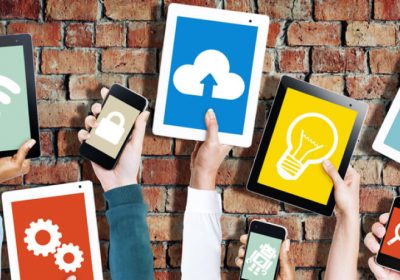
- Author: Mark Pesce | Author & Futurist
- Posted: March 1, 2023
Why ChatGPT will become as essential to a CFO as the spreadsheet!
From its launch in early December, the artificial intelligence ‘chatbot’ ChatGPT has quickly become one of the most popular apps on the Internet – amassing a hundred million users in its first month, a feat that took Uber nearly six years!
Why has ChatGPT become so incredibly popular? It’s friendly, seemingly broadly knowledgeable, and helpful in more situations than you can easily list – a nearly perfect electronic servant: far smarter than Siri, Alexa or Google Assistant, able to converse intelligently on almost any topic imaginable, and ready to lend a hand when asked.
The creators of ChatGPT – tech startup OpenAI – knew their tool would be useful, but likely had little idea of all the ways it could be used, until hundreds of millions of us had their own conversations with the program, asked it to lend a hand – then learned that its capacities far exceeded any predictions of its creators. Imagine suddenly stumbling upon an electronic ‘friend’ capable of giving assistance (by way of advice, counsel or direct instruction) in almost any imaginable situation – cooking, exercising, repairing a bicycle… You’d want to keep that highly useful new friend close at hand – a decision hundreds of millions have made.
Before the end of this decade, ChatGPT will seem as natural – and essential – to the CFO as the spreadsheet. To get there, we need to engage these tools in a conversation, learn their strengths and weaknesses, find ways to harness them, then share what we’ve learned within our organisations.
Mark Pesce, Inventor, Author & Futurist
Its broad usefulness has also triggered a bit of a panic: Schools everywhere now ban ChatGPT, fearing students will simply let the program write their assignments, answer their test questions, and solve their maths homework. Folks have administered both medical board certifications and bar examinations – and ChatGPT passed them. Could a computer program practice as a doctor or lawyer? (Technically, yes, practically, no.) What about other professions, such as finance or engineering or design? Is anything safe? Will ChatGPT take all our jobs? Or could we look upon this new tool as a once-in-a-generation opportunity to supercharge our productivity?
Although ChatGPT seems quite magical in its ability to converse in a tone and style that feels authentically human, at its heart, it’s only a clever bit of programming.
To create ChatGPT, boffins at OpenAI started by feeding all of the text on the Internet (ok, probably not all of the text, but certainly a significant percentage) into a gigantic database.
Next, OpenAI used a massive array of cloud computing resources to analyse this database, learning from all this text which words most likely follow preceding words. For example, we all know how to complete the phrase, “The cow jumped over the…” because we’ve heard it countless times. ChatGPT knows how to complete that phrase for exactly this same reason: within that data it came across “The cow jumped over the moon” many times, ‘learning’ to provide the correct answer.
That same learning process, scaled up trillions upon trillions of times and taking months of calculations, means that ChatGPT can generate answers to nearly any question – because it can predict the sequence of words with the highest probability of being the ‘correct’ answer.
If you’re now wondering, “Doesn’t that mean ChatGPT is simply guessing?” The answer to that is an emphatic yes. Most of the time that predictive trick at the core of ChatGPT works quite well. For casual conversation, it’s enough to convince most people that there’s a human mind on the other side of the connection. But the deeper you go, the greater the chance that ChatGPT reaches the limits of its ability to predict accurately. At that point, it just follows where its predictive path leads, and begins to make things up. They’ll often read like perfectly reasonable responses – but they’ll be incorrect.
When it comes to what the program ‘knows’ – that is, what it can share as a response to a query – ChatGPT has no innate sense of ‘true’ or ‘false’. The app doesn’t have any awareness of when it has reached beyond its limits, so it can’t stop itself. It does not – and can not – know when it fibs. For an undergraduate essay on the poems of Adrienne Rich, that may not present a problem. But where the stakes are higher – and the knowledge less widely available – ChatGPT may tell a furphy that has serious consequences.
All of this means that highly-trained and highly-experienced professionals have nothing to worry about from ChatGPT – yet. It won’t be coming to take work away from anyone who leverages their experience and deep knowledge in their day-to-day work. But it’s likely plenty of people with jobs that require less experience will suffer immediate impacts from ChatGPT – such as call centre workers, who could find themselves quickly replaced by ChatGPT, piped through a text-to-speech tool.
It’s been a long time since we’ve seen such a powerful tool – and we’re only just learning what’s possible That makes it a great time to experiment, to learn – and to adjust. With this in mind, here’s a few suggestions for how you can make ChatGPT your new ‘power tool’:
ONE: Find out what it knows about your area of deepest experience
As a ‘conversational’ system, ChatGPT offers a friendly and engaging interface. Just start by typing “Hello” in the prompt. You’ll soon find yourself in conversation with ChatGPT. (You might even start to imagine a human on the other side.) Tell ChatGPT what you do, what you’re interested in, and everything that makes you uniquely valuable to your organisation. Conversationally, ChatGPT will reveal what it knows – and what it doesn’t. Ask it hard questions, then check those responses for clarity, consistency and accuracy. You’ll likely find that it ‘knows’ some of what you know – but far from everything, and far from accurately. Now that you know some of its limits, you know when you might need to examine its responses with a more critical eye.
TWO: Get it to summarise a report, then do some paperwork
Next, feed an annual report or consolidated financial statement into ChatGPT – then start to ask it questions. ChatGPT is great at providing summaries of vast amounts of information. It can skim and reduce in a way that makes it possible for us to be across a lot more information: being well-briefed by ChatGPT is one of the enormous advantages it offers.
Having seen almost every form you can imagine, ChatGPT finds it easy to fill out forms and generate paperwork. It understands the step-by-step nature of bureaucratic processes, and has the capacity to offer assistance with them. Ask ChatGPT to provide correctly formatted and well-chosen language for a proposal for a grant, a filing to a regulatory body, or a pro-forma statement – its responses will be accurate (because it has seen so many similar examples to draw from) and its efforts will could save you substantial time. It’s likely that within the next few years most responses for paperwork requests will be generated by ChatGPT – which will soon be integrated into your word processor, thanks to Microsoft’s deal with OpenAI.
THREE: Get your team onboard
Once you feel comfortable with ChatGPT, ask your team to repeat these first two steps themselves. Let them explore what the tool knows about their own areas of expertise, then challenge them to find new ways ChatGPT can help them manage their paperwork. Have a team face-to-face where you brainstorm ways to integrate ChatGPT into your workflow to make the team more productive. Can your team push a lot of their paperwork onto ChatGPT, freeing them to focus on the most human aspects of their work? Can you build more mentoring into your team, sharing the deep knowledge and deep experience that ChatGPT lacks? And finally, can you challenge your team to rethink your processes around this new and very powerful tool?
Although it’s early days, we can already see how these new tools can help us to focus on the most important and most interesting elements of our work. As we discover more about what ChatGPT can (and can not) do well, we’ll become more confident in our abilities. Before the end of this decade, ChatGPT will seem as natural – and essential – to the CFO as the spreadsheet. To get there, we need to engage these tools in a conversation, learn their strengths and weaknesses, find ways to harness them, then share what we’ve learned within our organisations. Except in the pages of science fiction, we’ve never imagined computers as companions or peers in our work. We’re hitting the AI accelerator pedal; from here on in, things only grow more clever.
About the Author

Mark Pesce co-invented the technology for 3D on the Web – laying the foundations for the metaverse – has written eight books, including Augmented Reality: Unboxing Tech’s Next Big Thing, was for seven years a judge on the ABC’s The New Inventors, founded postgraduate programs at the University of Southern California and the Australian Film Television and Radio School, holds an honorary appointment at Sydney University, is a multiple-award-winning columnist for The Register, pens another column for COSMOS Weekly, and is professional futurist and public speaker. Pesce hosts both the award-winning ‘The Next Billion Seconds’ and ‘This Week in Startups Australia’ podcasts, and, with VRML co-inventor Tony Parisi, recently released the highly-praised series “A Brief History of the Metaverse”. Pesce brings his skills as a futurist and bridge-builder to organisations such as the G20 and World Bank, while mentoring startups working at technology’s bleeding edge.








